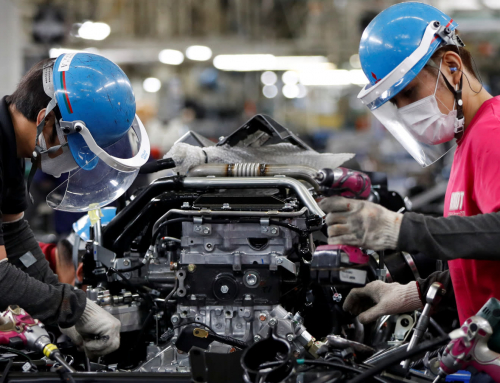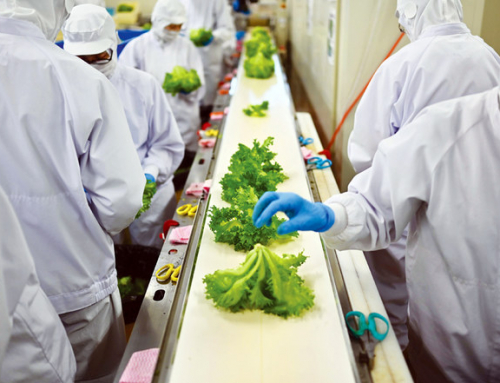As the global economy is becoming more innovation centric, today thinking about growth has become almost impossible without considering IP. Singapore, where the growth of IP sector is quite apparent, is moving in a direction to cement itself as the IP hub of Asian region. The Singapore govt. , for that matter, has announced an Intellectual Property Hub Master Plan to create a hive of IP activities in Singapore.
The intellectual property financial scheme and setting up Center of Excellence for IP valuation are some of the major steps taken by the Singapore govt. to steer the master plan proposed by Teo Ming Kian, Chairman of IP Steering Committee.
We conducted a study and tried to visualize the efforts of Singaporean govt. through the patent lens. The study will give you an insight of how Singapore is trying to establish itself as the next IP hub of Asia and who (law firms, local and foreign companies etc.) all are contributing to that growth.
Companies from Which Country are seriously considering IP Protection in Singapore?
How we derived the Insights:
We took the priority country statistics for the patents published at the Singapore patent office during 2009-14. These statistics point out the geographical area of origin of the various technologies patented in Singapore.
Key Take-Away of the Findings
- 95% of the technologies filed as patents in Singapore are invented outside the Singapore soil. No doubt, Singapore represents huge market potential for these countries; hence, to make the most out of their inventions in Singapore, they filed for the patent protection.
- Singapore government provides funding for R&D and for filing patents also. Not only this, there is a provision of tax benefits for companies of Singaporean origin that are actively filing patents for their researches. As of now, the Singapore based companies constitute only 5% of the total patents filed in Singapore, however, this number is predicted to increase over the period of time with the introduction of these new schemes from the government.
- Close to 50% of the patents filed in Singapore originates from USA. The next largest contributor, approx. 13% share, is Japan. So, in total more than 60% of patents in Singapore are filed by USA and Japan companies.
Who Are The Top Law Firm’s Prosecuting Patents In Singapore?
How we Derived the Insights: We accumulated year wise statistics for patents* prosecuted by individual Law Firms during 2009-14 and used that to gain insights on the most active IP Firms at the Singapore patent office.
Key Take-Away of the Findings
- About 65% of total patents prosecuted by top law firms are of US priority. This indicates that most of the innovation comes from foreign countries and local innovation has yet to leave a mark in the patent world.
- More than 25% of total published patents are prosecuted by Drew & Naiper. Noticeably, Drew and Naiper focuses its operations majorly in Singapore and maintains an edge in domestic patent prosecution activities.
- Qualcomm has done some serious patent fillings in Singapore. Further, patents assigned to Qualcomm Inc., Novartis, ExxonMobil, Micron Technology, Hitachi Ltd, etc., have been prosecuted by Drew & Naiper.
What Does The Year Wise Prosecution Activities Of Top Law Firm’s In Singapore Look Like?
Key Take-Away of the Findings
- Spruson & Ferguson Pte Ltd with approx. 20% share is the next largest firm handling patent prosecution activities in Singapore. In addition, Spruson & Ferguson is trying to dominate the entire Asia-Pacific region, having established itself in a number of jurisdictions including Australia, Singapore, Malaysia, China, New Zealand etc.
- Spruson & Ferguson has prosecuted patents assigned to major players including Abott Lab, F. Hoffmann La Roche AG, Sony Corporation, etc.
- Allen and Gledhill is expanding its networks in South East Asia Region including Laos, Myanmar and Malaysia.
Who Are The Top Innovators In Singapore?
How we Derived the Insights: We studies patents* published in Singapore during 2009-14 to identify the top players of Research & Development activities in Singapore.
All patents assigned to Qualcomm that were published during 2009-14 claim the US priority. In future, however, it is expected that patents from Qualcomm may originate from Singapore itself due to the recent set up of Qualcomm’s IC Design and Engineering center in Singapore.
Which US Firms/Universities Dominate Patenting Activities In Singapore?
How we Derived the Insights: We dig deep into the statistics of top US Firms/Universities with maximum published patents* during 2009-14. Further, Market Research has been done to gauge Firm/University information.
Key Take-Away of the Findings:
- Interdigital with a total of 411 patent publications during 2009-14 is amongst the top 10 companies having highest number of patents. Also, 95% of its total patents have been prosecuted by HENRY GOH(S) PTE LTD and SPRUSON & FERGUSON (ASIA) PTE LTD.
Which Domestic Firms/Universities Dominate Patenting Activities In Singapore?
How we Derived the Insights: We dig deep into the statistics of top Firms/Universities of Singapore with maximum published patents* during 2009-14. Further, Market Research has been done to gauge Firm/University information.
Key Take-Away of the Findings
- Agency for Science, Technology and Research (A-STAR) is ranked 1st amongst Government and Research Institutes for patent activity during 2009-14 (1607 published patent applications) in Singapore.
- A-STAR has been able to cross the 250 mark in the number of successful licenses in the past 5 years and formed major public-private partnerships including partnerships with Fujitsu, P&G, ARTC, GE Healthcare, L’Oreal and Lloyd’s.
COLLABORATIONS (University-University, University- Corporate)
- Collaboration between A*STAR, NTU and National Skin Centre forming the SRIS (Skin Research Institute of Singapore) has been established to foster and conduct high impact skin research to improve health outcome and quality of life.
- Joint research labs between companies and universities are being set up. For example, BMW Future Mobility Lab in collaboration with NTU, and Rolls Royce Advanced Technology Centers in collaboration with A-STAR, NTU and NUS.
- Nanyang Technical University has developed strong and broad international reach covering academic and research partnerships with MIT, Stanford University, Carnegie Mellon University, Cornell University, Caltech, University of Washington, Swiss Federal Institute of Technology, Shanghai Jaiotong University, IIT’s, etc. to accelerate R&D activities.
- The Singapore Centre on Environmental Life Sciences Engineering (SCELSE) is a unique interdisciplinary Research Centre of Excellence (RCE) established in 2011. SCELSE is funded by National Research Foundation, Singapore Ministry of Education, Nanyang Technological University and National University of Singapore to perform research on biology of microbial biofilm communities in environmental and engineered systems.
Under Which Technology Domains Are The Maximum Number of Patents Being Published?
How we derived the Insights: Top data of technology domain was obtained by analyzing IPC classes of patents published in Singapore.
Key Take-Away of the Findings
- The top technology domains as per the number of patents published during 2009 – 2014 are (i) Preparations for Medical, Dental, Or Toilet Purposes and (ii) Semiconductor Devices.
- Singapore is establishing itself as a preferred location for Medical technology over other regions in Asia as it has strong base of electronics and precision engineering already set up to support Medical technology industry. The supporting industry provides a powerful technical assistance in Precision Engineering, Mold Designing, Tooling Services, Designing, Prototyping and building Industrial Automation Equipment.
- The technology trends at the Singapore patent office show (i) Semiconductors and (ii) Data processing Systems Adapted for Administrative, Commercial, Financial, Managerial or Forecasting Purposes, etc., to be the dominant areas. This is in sync with the trends at the US patent office and supports the fact that most of the innovation is originating out of the US.
How Does The Patent Publishing Trend Look Like?
How we derived the Insights: We analyzed the publishing trend at the Singapore Patent Office to figure out the number of patent applications reaching the grant stage. The patent kind codes have been utilized to ascertain the various stages of the patent applications.
Key Take-Away of the Findings
- The total number of granted patent publications is 26,317 during 2009-14 and the growth rate has been consistent over this duration.
- The current amendments in the Singapore Patent Act, implemented with effect from 14 Feb 2014, allow the abolition of Dual track (Fast track/Slow track) patent prosecution options and formulate a single track option. The amendments remove slow track procedures and block extensions of time that will help in improving the grant period of the future patents.
What Is The Grant Rate Of The Patents?
How we derived the Insights: We generated the Grant Rate Data after analyzing the duration between Publication Date and Application Date of the patents published in Singapore.
Key Take-Away of the Findings
- The average grant rate of the patents* published during 2009-14 has been found to be 3.6 years.
The above research was performed by Vikas Jha and Gaurav Rana of the solutions team under the mentorship of Chakshu Kalra.



















